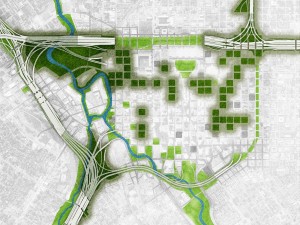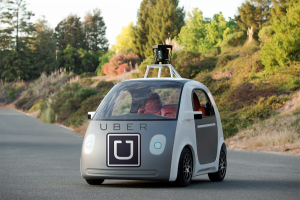A recent article in the Wall Street Journal documents the continued rise of e-commerce coupled with the inevitable slide of brick-and-mortar stores. A few key numbers:
- Overall, online holiday sales increased by 11% over the previous year while brick-and-mortar sales increased only 2.7%
- JC Penny brick-and-mortar sales dropped by nearly 1% while its online sales grew by double digits.
- Amazon was the clear leader in online sales with 38% of all online revenue
Probably the most striking number for the subject of this blog, brick-and-mortar shopping traffic (as in the number of times people went into stores) declined by 12%. That number – if it continues – will inevitably lead to a drop in the amount of brick-and-mortar stores and major shifts in land use and transportation demand. This will potentially also decrease the vitality and activity around commercial areas.



